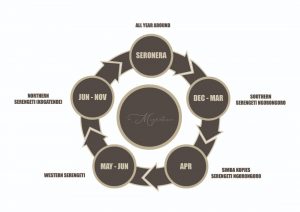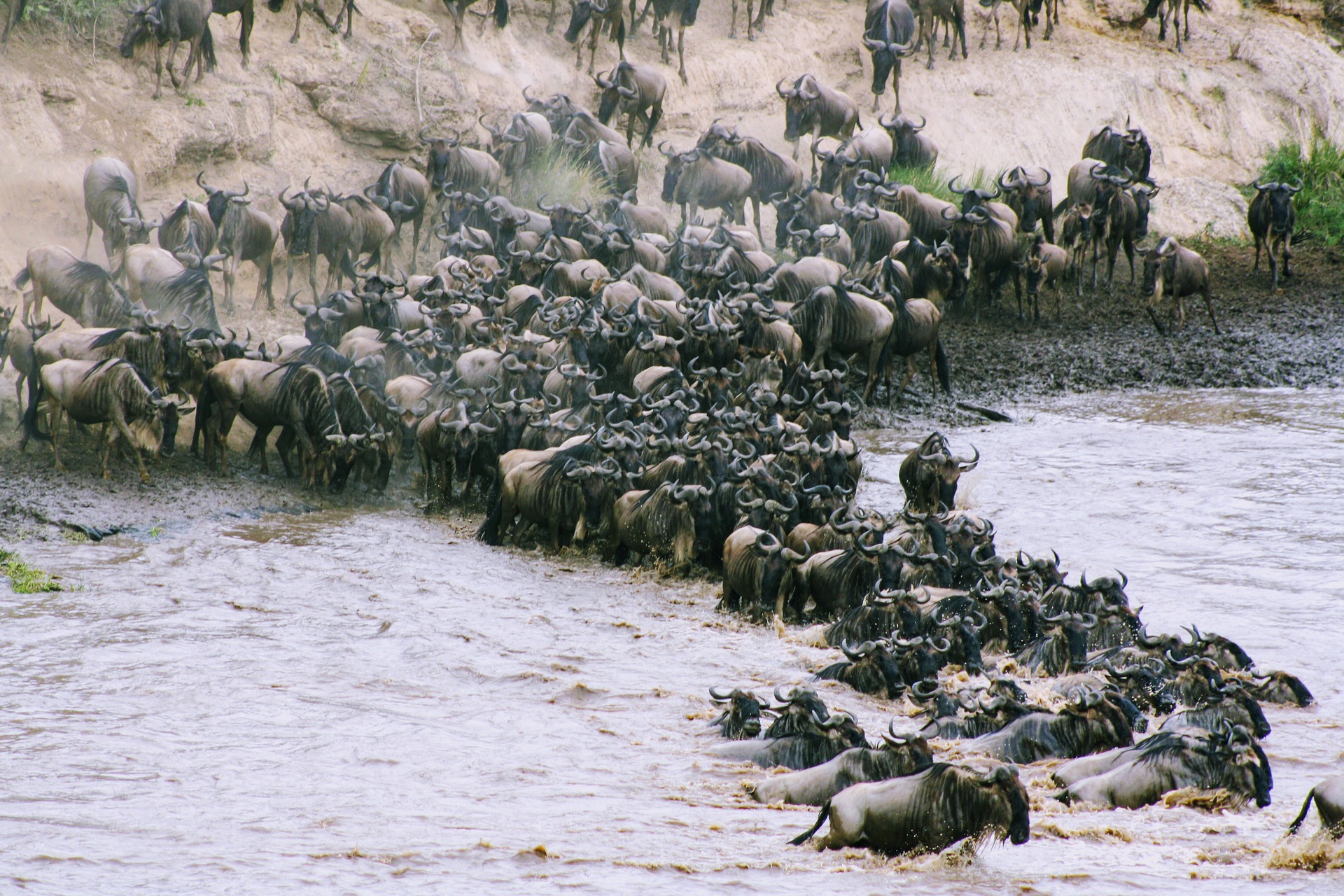The Great Migration: an all year-round event.

The Great Wildebeest Migration of Serengeti is also known as one of the “Seven New Wonders of the World,” and takes place on the 40,000 square kilometers of the Serengeti Ecosystem.
Eland, Zebras and gazelles will also join in on the migration, moving with the herds to find fresh grass and water. This event occurs during all year around and it moves around on a clockwise direction. On this entire cycle the herds will travel around 500 kilometers.
Not only the Great Migration is an amazing event for travelers but also for the predators, including lions, hyenas, cheetahs, leopards and others that also follow this cycle as a part of their life.
 The whole cycle starts on the short grass plains of Serengeti on January, when after the short rain season of November, the herds of the wildebeest migration arrive to the southern plains of Serengeti. The herds will stay around this area through January, February and March, with most wildebeest calves born in a short window around February in Ndutu area. And this is one of the best kept secrets of the Great Migration, a breath taking event where approximately 8,000 wildebeest are born every day. This will also bring a high concentration of predators in the area and you will be able to experience an unforgettable event.
The whole cycle starts on the short grass plains of Serengeti on January, when after the short rain season of November, the herds of the wildebeest migration arrive to the southern plains of Serengeti. The herds will stay around this area through January, February and March, with most wildebeest calves born in a short window around February in Ndutu area. And this is one of the best kept secrets of the Great Migration, a breath taking event where approximately 8,000 wildebeest are born every day. This will also bring a high concentration of predators in the area and you will be able to experience an unforgettable event.
During March they will gradually move around these areas and spread west across the south plains.
Around April and May they start their great migration north on the seek of fresh grass and water.
On the areas around Moru Kopjes and west of Seronera you will be able to see hundreds of thousands of animals – joined by many zebras, and a scattering of Thomson’s and Grant’s gazelles.
Around June the wildebeest migration is to be founded on the south side of the Grumeti River, which has some channels which block or slow their migration north. The wildebeest then congregate there, in the Western Corridor, often building up to a high density before crossing the river.
The wildebeest migration continues moving northwards during July and August, often spreading out across a broad front: some heading through Grumeti Reserve and Ikorongo, others north through the heart of the Serengeti National Park.
 During September the herds will spread out across the northern Serengeti, where the Mara River provides the migration with its most serious obstacle. This river crossed the northern Serengeti from Kenya’s adjacent Maasai Mara Game Reserve. Watching the herds of the wildebeest migration crossing the Mara River can be very spectacular and a life changing experience. You can see unforgettable scenes of wildlife survival and life struggle.
During September the herds will spread out across the northern Serengeti, where the Mara River provides the migration with its most serious obstacle. This river crossed the northern Serengeti from Kenya’s adjacent Maasai Mara Game Reserve. Watching the herds of the wildebeest migration crossing the Mara River can be very spectacular and a life changing experience. You can see unforgettable scenes of wildlife survival and life struggle.
Sometimes the directions of the crossing might confuse you, but common to see herds cross the Mara River north on one day, and then back south a few days later.
We reach October and the wildebeest herds are all migrating heading south, through western Loliondo and the Serengeti National Park’s Lobo area, returning to the green shoots which follow the rains on the short-grass plains of the southern Serengeti in November and December.
This is an all year around event.
Are you ready to follow the Great Migration with Admire Tanzania Safaris?
WE TAKE YOU WHERE THE ACTION IS.
